-
Product Name
TSG101 antibody
- Documents
-
Description
TSG101 Rabbit Polyclonal antibody. Positive WB detected in HeLa cells, NIH/3T3 cells. Positive IP detected in HeLa cells. Positive IF detected in Hela cells. Positive IHC detected in human heart tissue. Positive FC detected in HeLa cells. Observed molecular weight by Western-blot: 46 kDa
-
Tested applications
ELISA, WB, IHC, IF, IP, FC
-
Species reactivity
Human,Mouse,Rat; other species not tested.
-
Alternative names
ESCRT I complex subunit TSG101 antibody; TSG10 antibody; TSG101 antibody; tumor susceptibility gene 101 antibody; VPS23 antibody
-
Isotype
Rabbit IgG
-
Preparation
This antibody was obtained by immunization of TSG101 recombinant protein (Accession Number: NM_006292). Purification method: Antigen affinity purified.
-
Clonality
Polyclonal
-
Formulation
PBS with 0.02% sodium azide and 50% glycerol pH 7.3.
-
Storage instructions
Store at -20℃. DO NOT ALIQUOT
-
Applications
Recommended Dilution:
WB: 1:200-1:2000
IP: 1:200-1:2000
IHC: 1:20-1:200
IF: 1:10-1:100
-
Validations
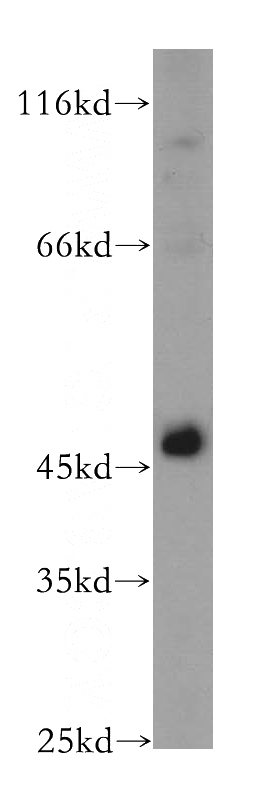
HeLa cells were subjected to SDS PAGE followed by western blot with Catalog No:116428(TSG101 antibody) at dilution of 1:500
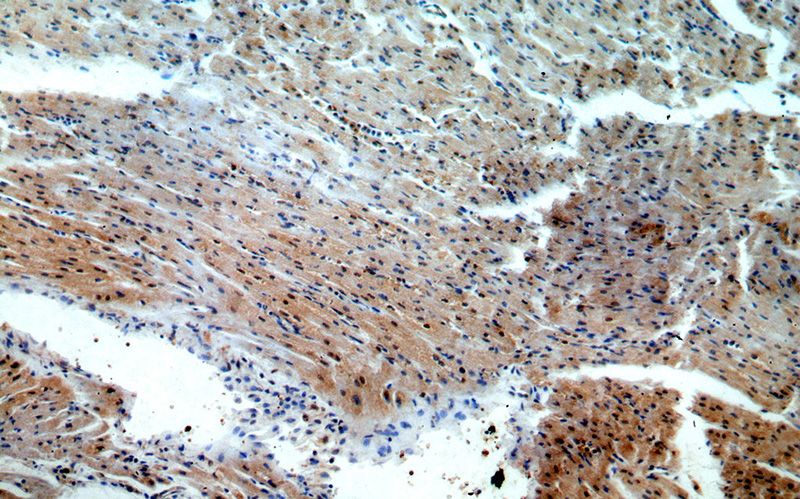
Immunohistochemical of paraffin-embedded human heart using Catalog No:116428(TSG101 antibody) at dilution of 1:50 (under 10x lens)
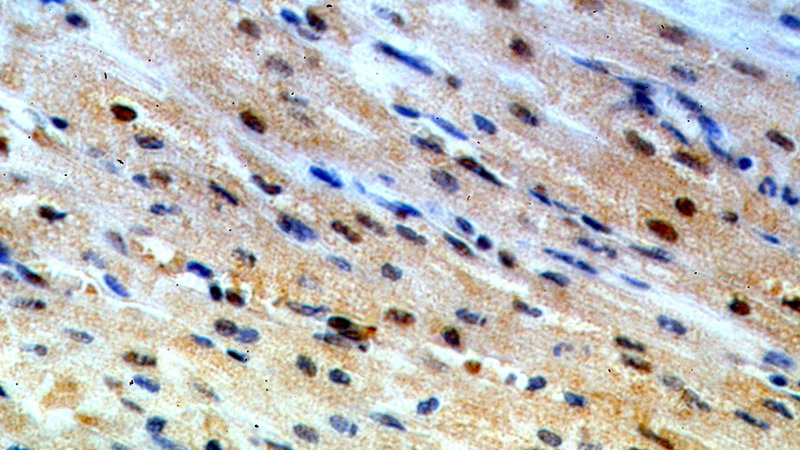
Immunohistochemical of paraffin-embedded human heart using Catalog No:116428(TSG101 antibody) at dilution of 1:50 (under 40x lens)
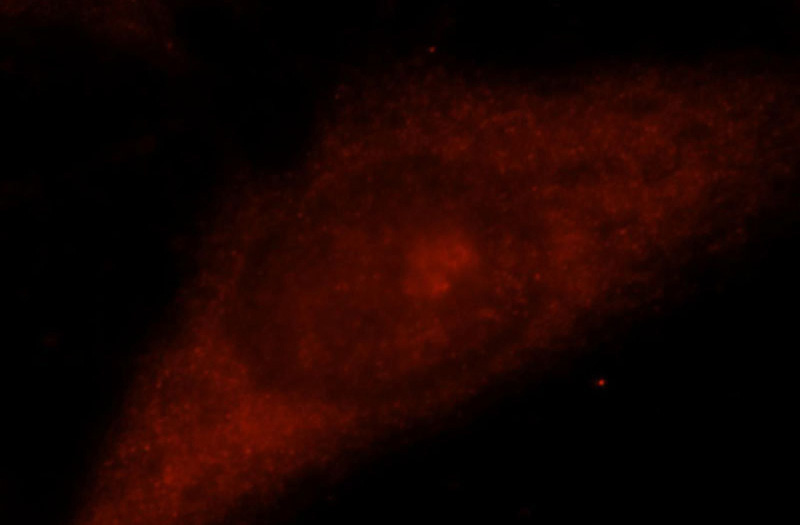
Immunofluorescent analysis of Hela cells, using TSG101 antibody Catalog No:116428 at 1:25 dilution and Rhodamine-labeled goat anti-rabbit IgG (red).
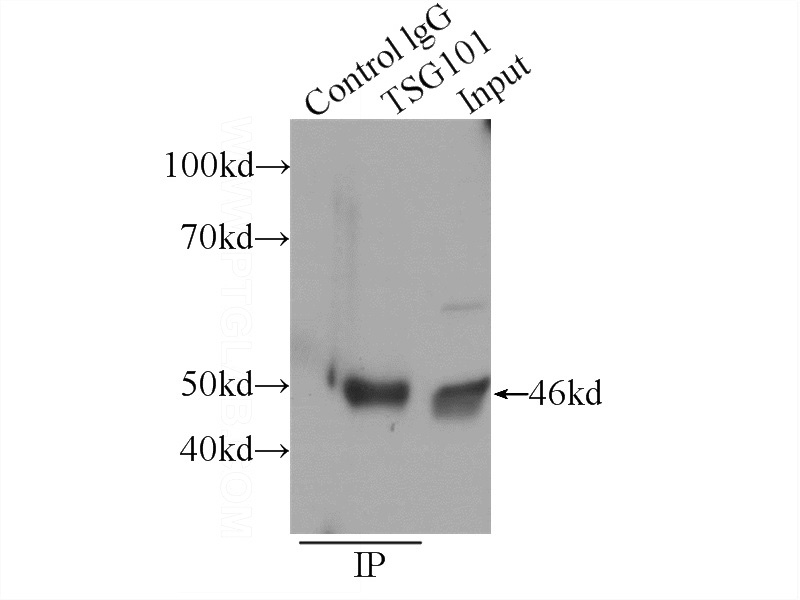
IP Result of anti-TSG101 (IP:Catalog No:116428, 3ug; Detection:Catalog No:116428 1:500) with HeLa cells lysate 1320ug.
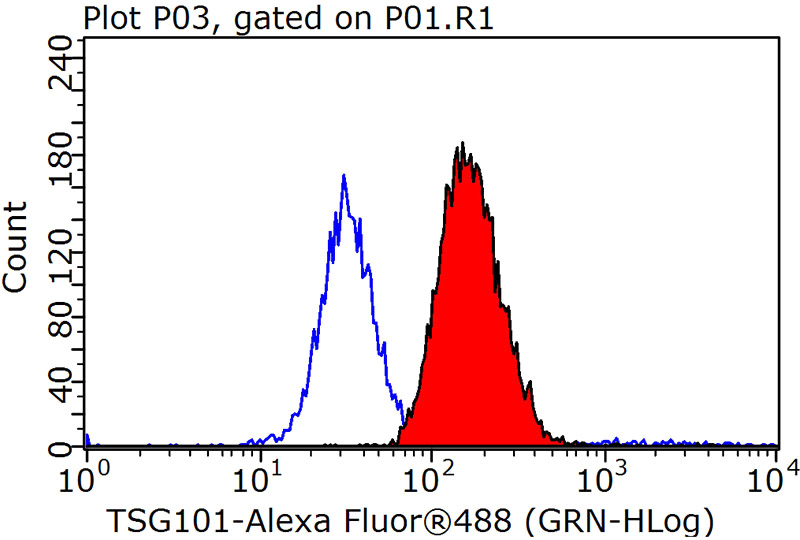
1X10^6 HeLa cells were stained with 0.2ug TSG101 antibody (Catalog No:116428, red) and control antibody (blue). Fixed with 90% MeOH blocked with 3% BSA (30 min). Alexa Fluor 488-congugated AffiniPure Goat Anti-Rabbit IgG(H+L) with dilution 1:1000.
-
Background
TSG101(Tumor susceptibility gene 101 protein) is essential for endosomal sorting, membrane receptor degradation and the final stages of cytokinesis. It plays a crucial role for cell proliferation and cell survival. TSG101 has been identified as a candidate tumor suppressor gene and belongs to the ubiquitin-conjugating enzyme family. TSG101 is a marker for exosome. This protein has 2 isoforms produced by alternative splicing.
-
References
- Liang B, Peng P, Chen S. Characterization and proteomic analysis of ovarian cancer-derived exosomes. Journal of proteomics. 80:171-82. 2013.
- Dayan D, Salo T, Salo S. Molecular crosstalk between cancer cells and tumor microenvironment components suggests potential targets for new therapeutic approaches in mobile tongue cancer. Cancer medicine. 1(2):128-40. 2012.
- Li J, Liu K, Liu Y. Exosomes mediate the cell-to-cell transmission of IFN-α-induced antiviral activity. Nature immunology. 14(8):793-803. 2013.
- Boelens MC, Wu TJ, Nabet BY. Exosome transfer from stromal to breast cancer cells regulates therapy resistance pathways. Cell. 159(3):499-513. 2014.
- Zhang L, Zhang S, Yao J. Microenvironment-induced PTEN loss by exosomal microRNA primes brain metastasis outgrowth. Nature. 527(7576):100-4. 2015.
- Zhang W, Peng P, Kuang Y. Characterization of exosomes derived from ovarian cancer cells and normal ovarian epithelial cells by nanoparticle tracking analysis. Tumour biology : the journal of the International Society for Oncodevelopmental Biology and Medicine. 2015.
- Enriquez VA, Cleys ER, Da Silveira JC, Spillman MA, Winger QA, Bouma GJ. High LIN28A Expressing Ovarian Cancer Cells Secrete Exosomes That Induce Invasion and Migration in HEK293 Cells. BioMed research international. 2015:701390. 2015.
Related Products / Services
Please note: All products are "FOR RESEARCH USE ONLY AND ARE NOT INTENDED FOR DIAGNOSTIC OR THERAPEUTIC USE"
